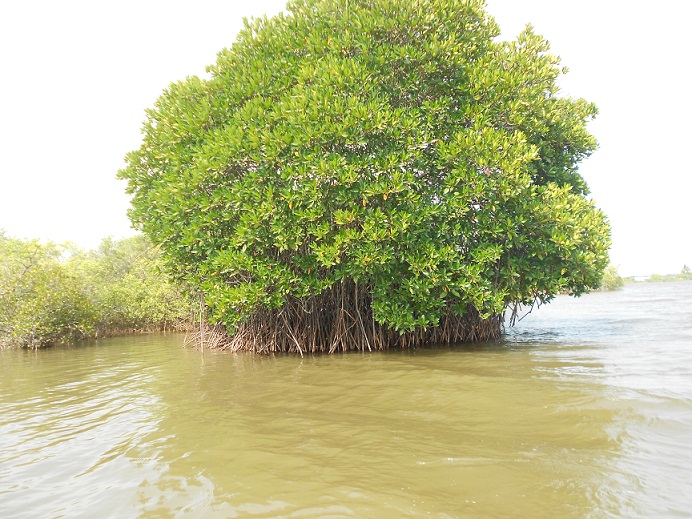How many of you have visited the ever popular touristy town Pondicherry and also paid a visit to Pichavaram Mangrove forest? I know the number of answers in affirmative will be slim. Despite being the second largest mangrove forest in the world and Sundarban (West Bengal and Bangladesh) being the largest, yet it hardly attracts the attention of the tourists. For reasons unknown, Pichavaram which has so much tourist potential and so close to cities like Chennai and Pondicherry, continues to be unexplored and less travelled.
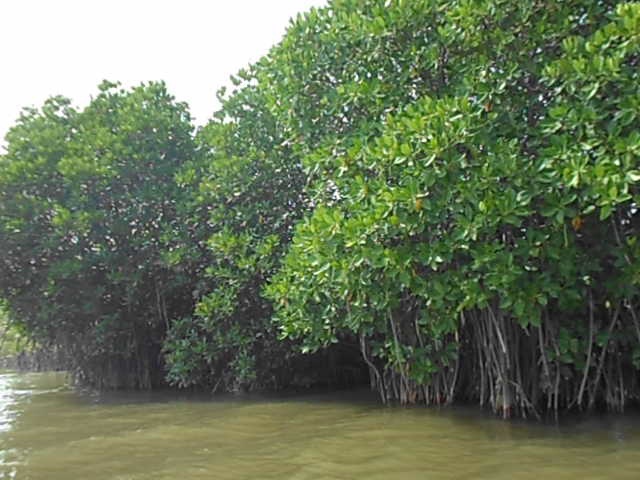
So, if you ever happen to be in Chennai or Pondicherry, never miss the opportunity to visit Pichavaram Mangrove Forest, one of the largest such ecosystems in the world, only second to Sundarban as I have mentioned earlier. I had done a bit of research before visiting Pondicherry and came across this hidden gem which I eventually visited. And believe me, the experience turned out to be an awesome one. If you are a nature lover or an eco-tourist, then this destination must feature in your priority list.
More often than not I have found that most tourists stick to the basics, only visiting a list of places that are pre-planned. They never try to travel a bit further and in the process miss many potential attractions which lie so close to them. I wish the tourists would do a bit of homework before travelling to Chennai or Pondicherry so that they wouldn’t miss such unmissable attractions such as Pichavaram.
Must read post: Visiting the land of Ramana Maharshi and Arunachaleswar
Post Contents
Reaching Pichavaram Mangrove Forest
You can visit Pichavaram Mangrove forest either from Chennai or from Pondicherry quite conveniently. It will turn out to be a great day trip if you start early. My visit to Pichavaram was from Pondicherry, a city I frequent very often. Pichavaram is barely 70 kilometers from Pondicherry and a drive along East Coast Road (ECR) would take you to your destination.
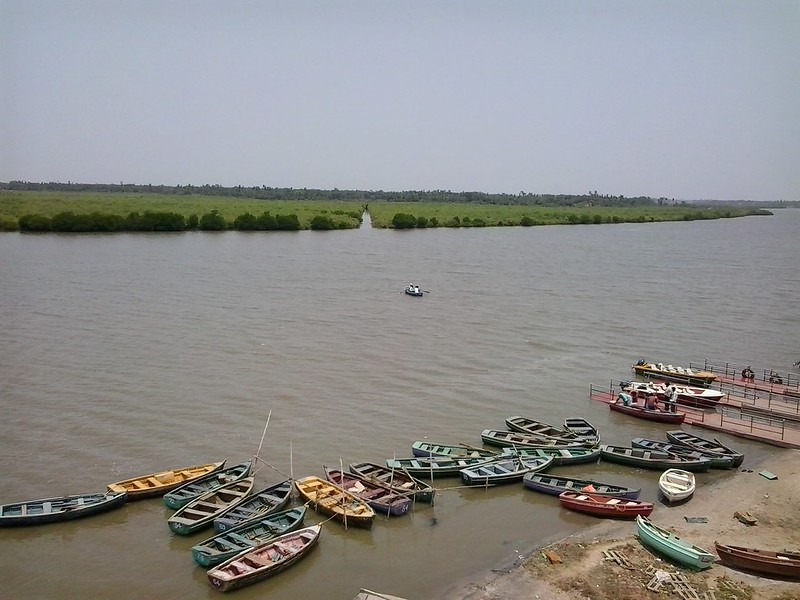
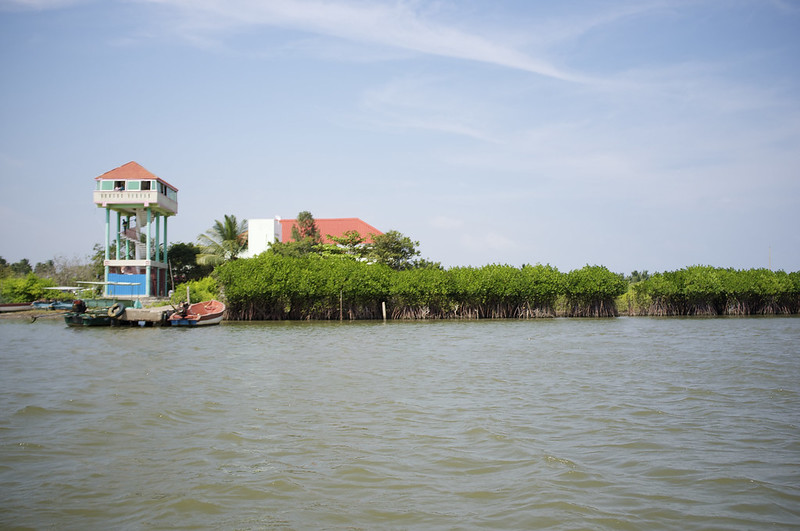
We started sharp at 7 AM from our guest house in Pondicherry and travelled along the ECR that runs parallel with the Bay of Bengal. En route Pichavaram we stopped at Cuddalore, the district headquarters town for breakfast. After a sumptuous South Indian breakfast we hopped into the taxi and drove on. With just 4 kilometers to reach Chidambaram (another tourist attraction), we took a left turn towards the sea.
The 9 kilometers drive from ECR to the Pichavaram boat house is not that cosy as in most places you find the road is not in good shape. At first sight Pichavaram might not impress you at all and you become a bit apprehensive about your adventure. This is because the Boat House here doesn’t seem any great in terms of both infrastructure and the facilities it provides. But as you proceed to embark on your adventure into the second largest mangrove forest in the world, you find things are quite OK and your safety is not not compromised.
Summer special: 15 summer drinks you must try to beat the heat this summer
Boat Ride in Pichavaram Mangrove Forest
Boat ride amidst the dense mangrove forest in the Pichavaram backwater is the most exciting activity that you must undertake if you are here. The boat house is managed by the Tamilnadu Tourism Development Corporation (TTDC) and the Tamilnadu State Forest Department. You have the choice of motor boats as well as row boats for the ride. Motor boats are faster and convenient to travell up to the beach of Bay of Bengal, but not suitable to explore the canals and sublets. We settled for a row boat for four persons as we intended to venture the mangroves and the forest. There are no long queues for tickets as I have mentioned fewer tourists visit the place.
Life jackets are provided in the boat and it is mandatory for all taking the boat ride. Our boat man was a middle aged experienced hand who could speak some broken English. As you sail deep into the backwater, the first impression that you have is that you are lost in the middle of a sea with water all around. But as you sail further, the mangrove plant begins to appear. Soon you find the waterway becoming narrower with mangroves on both sides.The water here is not that deep or clear and the Mangroves may not be among the beautiful plants, yet it is an experience that you must relish.
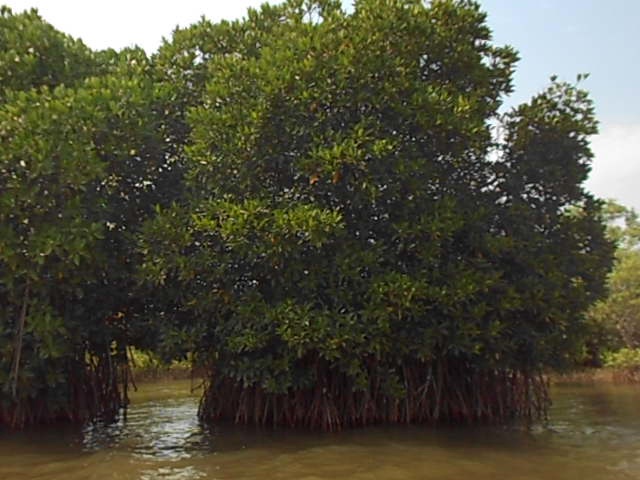
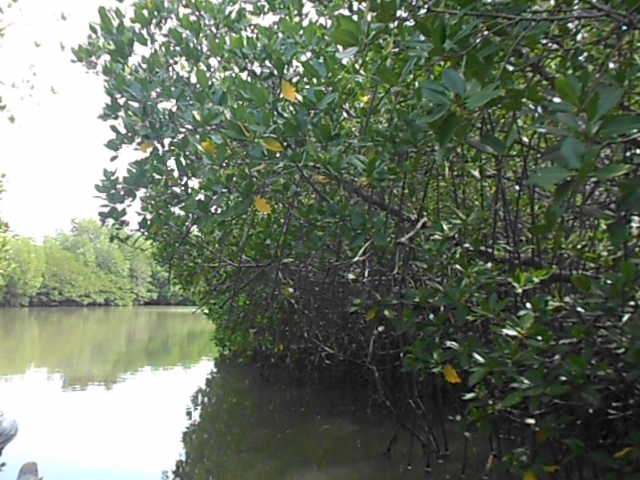
Soon we spotted the canals and the sublets which is the most exciting part of your journey. We chose to venture into one of these mystery canals. Our boatman asked us to be a little bit cautious as the canals are very narrow and only just have the right space for a boat. He also informed me that the water is only 2/4 feet deep, but never try to get off from the boat as you may get stuck in the mud. He also said that Pichavaram Mangrove forest is known for water snakes, but there were no crocodiles.
As the boat entered the canal, the light dimmed and creepy sounds filled our ears. Everything was strangely quiet and surreal! Our boat could barely navigate the canal, occasionally colliding with the mangroves’ strong roots or kissing the salt crystal-covered trunks. When the branches were just at the level where they could hit us hard, the boatman did warn us to keep our heads down! It was really some kind of an adventure as we immersed ourselves in the mysterious beauty of nature.
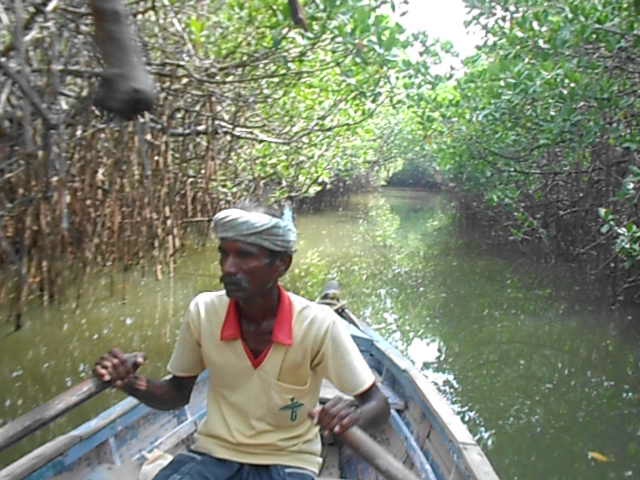
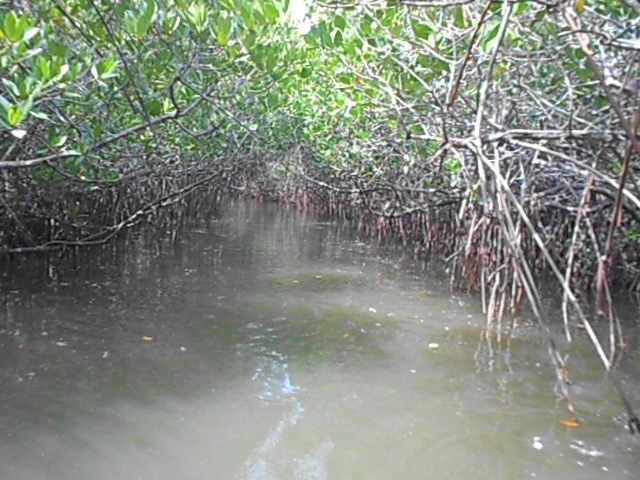
After covering some 1 kilometers in about 30 minutes in the canal, it proved nothing short of any thrills. The boat ride usually consists of travelling to only one canal, but if you want to explore more, then the boatman would happily take you to the other canals. All you need to do is to pay some extra money to the boatman. We opted for one more canal for which we paid Rs 100 extra to the boatman.
Covering an area of 1100 hectares, Pichavaram boasts of some 50 small islands that are interspersed throughout a vast expanse of water covered in mangrove forest. Pichavaram Mangrove Forest is India’s largest mangrove forest. It is separated from the Bay of Bengal by a sandbar.
Summer special: 9 exotic places you must visit this summer holidays in 2021
The Mangrove Forests
For those who have no ideas about what mangrove forests are, let me explain it to them. These are small trees or shrubs that grow in saline or brackish water along the coast. The term is also applied to tropical coastal vegetation that includes such species. Mangroves grow in the tropics and subtropics all over the world.The total mangrove forest cover of the world is about 137,200 square kilometers that is spread over 118 countries.
Mangrove plants, also known as halophytes, are salt-tolerant trees that have adapted to life in harsh coastal conditions. To deal with salt water immersion and wave action, they have a complex salt filtration system and a complex root system with adapation to the low oxygen levels found in waterlogged mud. As per an estimate there are about 110 mangrove species that are recognised. However only 54 of these 110 are “true mangroves,” or species that are found almost exclusively in mangrove habitats.
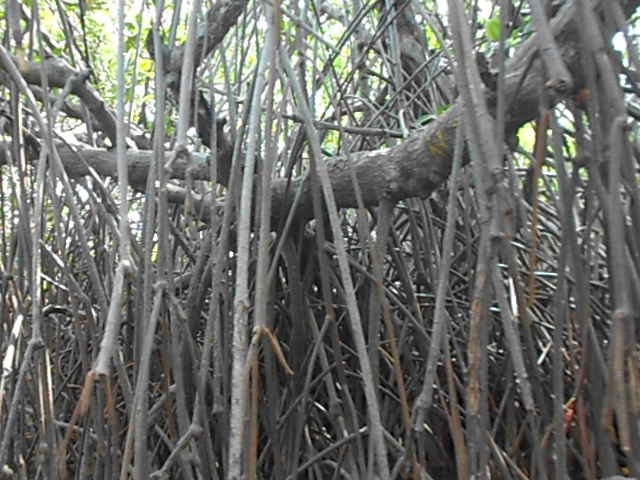
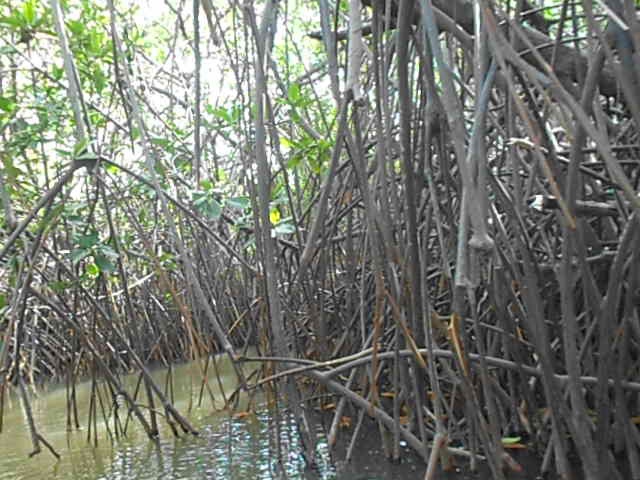
Coming back to the Pichavaram Mangrove Forest, the two species that dominate the Pichavaram biotope are Avicennia and Rhizophora which are commonly known as Black mangroves and Red mangroves respectively. These mangroves play a part ensuring the survival of rare varieties of economically important shellfish and finfish.
While travelling through the canals and sublets you can see the unique root systems of the mangrove trees with membranes that allow only fresh water to pass through. They also have breathing roots that emerge from the water and have pores that can take in oxygen. Pichavaram Mangrove forest acted as a buffer for water during the tsunami in 2004 that hit Tamilnadu. According to environment scientists the destruction could have been much more severe but for the Pichavaram Mangrove forest.
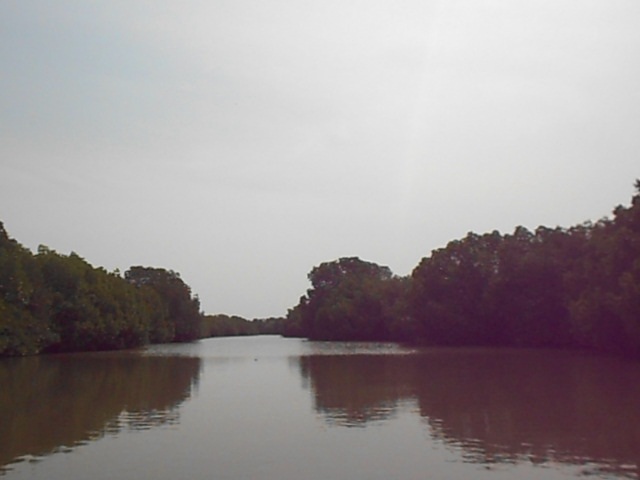
The picturesque mangrove forests also attract the movie makers and is a popular shooting location of South Indian movies. Popular movies like Idayakanni (1975), Sooryan (2007), Dasavatharam (2008), and Thupparivalan (2017) have been filmed here.
Recommended Read: Revisiting Bhima Bhoi and Mahima Dharma in Khaliapali
Fauna
The Pichavaram ecosystem boasts a number of water animals and birds. The incredible biodiversity has attracted students and scientists from all over India to study the mangrove forest. Migrant and local birds, such as snipes, cormorants, egrets, storks, herons, spoonbills, and pelicans, are drawn to the mangroves. A total of 177 bird species from 15 orders and 41 families have been identified. Bird watching is the most important activity in Pichavaram and if you really want to enjoy it, then do come here in the winters especially between November and February.You will find them in ample numbers.
Due to the abundance of prey and the timing of migrants from other countries as well as local birds from their breeding grounds across India, a large population of birds could be seen from November to January. The availability of various habitat types such as channels, creeks, gullies, mudflats and sand flats, as well as adjacent seashore, provides ideal habitat for various birds and animal species. The Pichavaram mangroves are also home to varieties of seaweed, fish, prawns, crabs, oysters, turtles, and water snakes.
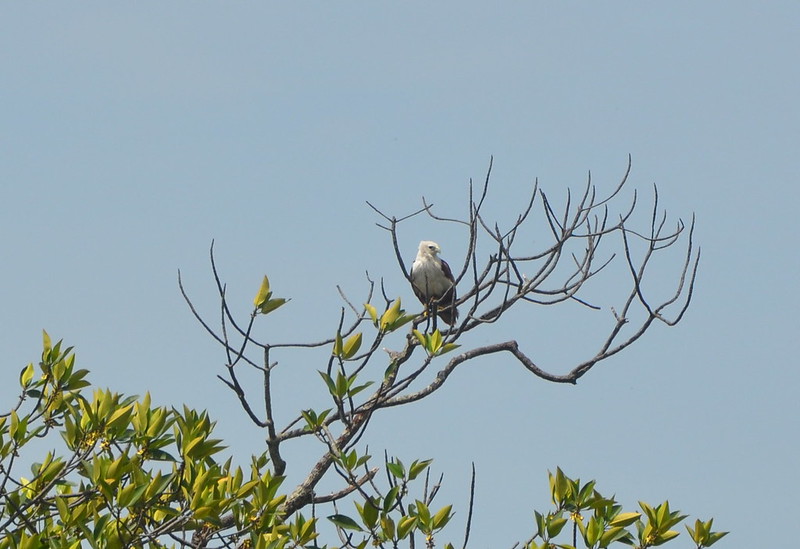
You may also Like: Gingee fort: 5 amazing facts that make it a must visit
Travel Tips
- If you want to have a good experience and spend more time in the Pichavaram mangrove forests, then start early so as to reach there by 8.30 AM. This will help you to take the morning boat trips.
- The best time to visit Pichavaram is between November and February when the weather is really pleasant. Avoid summer as it can be tough to tolerate the scorching sun. Also avoid weekends and public holidays as it does get busy then
- Accommodation options are limited in Pichavaram. There is the Pichavaram Adventure Resort run by the Tamilnadu Tourism Development Corporation which you can try. It has a dormitory as well as rooms and cottages. But the amenities are very poor due to lack of competition. You can get better budget hotels in Chidambaram just 15 kilometers away. And if you are on a day trip from Pondicherry, then better stay there.
- Pichavaram also doesn’t have good hotels and restaurants. If you want to spend a good amount of time on a boat ride, then you need to pack some dry foods and also take enough water with you.
- Remember that boat operators all charge extras for trips inside the small canals and to filming locations. You’ll have to negotiate with them directly. How much you pay is determined by how much you want to see.
- Do club your visit to the Pichavaram Mangrove Forest with the Natarajar Shiva temple in Chidambaram which is barely 15 kilometers from the Pichavaram boat house. You shouldn’t miss visiting this small temple town..

